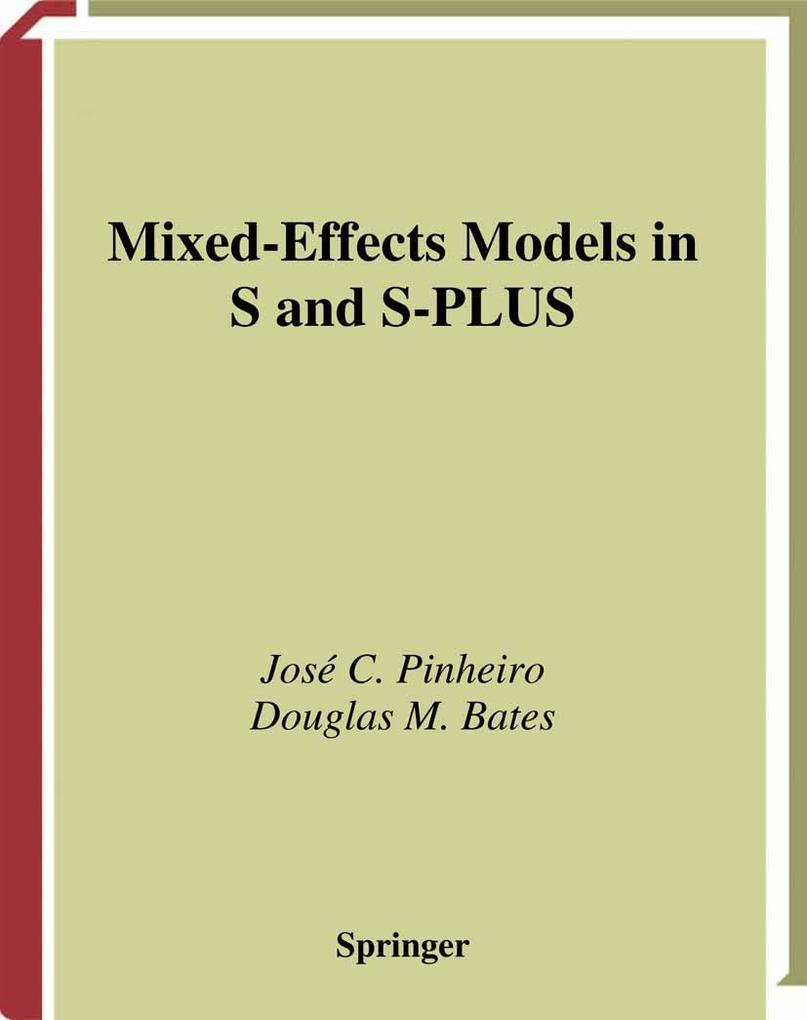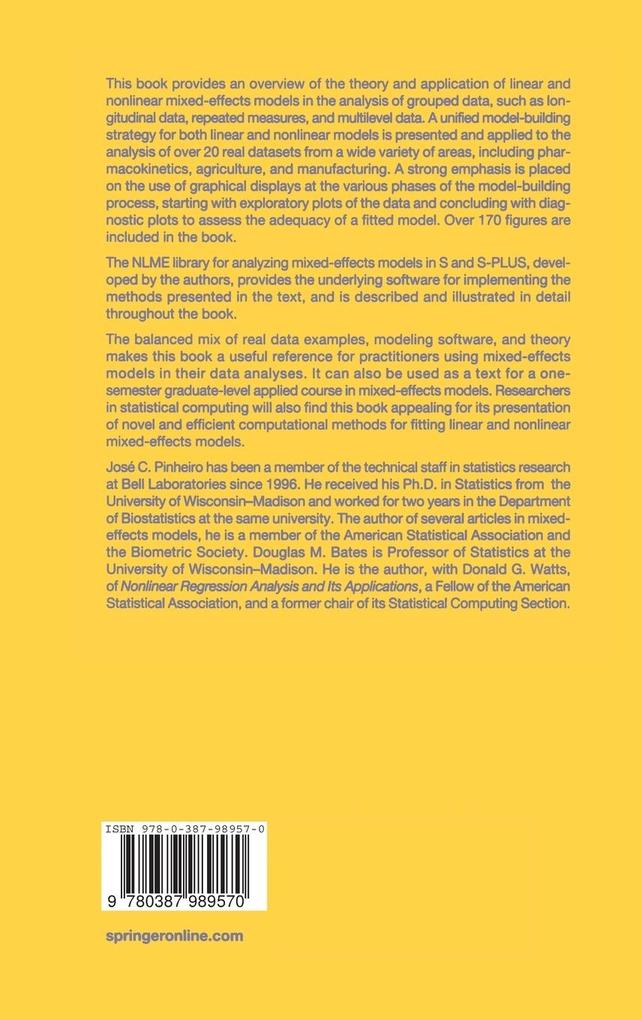
Zustellung: Sa, 21.06. - Mi, 25.06.
Versand in 1-2 Wochen
VersandkostenfreiBestellen & in Filiale abholen:
"Over 170 figures are included in the book. . . . the material covered in the book is self-contained . . . . The balanced mix of real data examples, modeling software, and theory makes this book a useful reference for practitioners who use, or intend to use, mixed-effects models in their data analyses. It can also be used as a text for a one-semester graduate-level applied course in mixed-effects models." (E. M. Psyadlo, zbMATH 0953. 62065, 2022)
Inhaltsverzeichnis
Linear Mixed-Effects Models. - Linear Mixed-Effects Models: Basic Concepts and Examples. - Theory and Computational Methods for Linear Mixed-Effects Models. - Describing the Structure of Grouped Data. - Fitting Linear Mixed-Effects Models. - Extending the Basic Linear Mixed-Effects Model. - Nonlinear Mixed-Effects Models. - Nonlinear Mixed-effects Models: Basic Concepts and Motivating Examples. - Theory and Computational Methods for Nonlinear Mixed-Effects Models. - Fitting Nonlinear Mixed-Effects Models.
Produktdetails
Erscheinungsdatum
05. Mai 2000
Sprache
englisch
Auflage
2000
Seitenanzahl
548
Autor/Autorin
José Pinheiro, Douglas Bates
Verlag/Hersteller
Produktart
gebunden
Abbildungen
XVI, 528 p.
Gewicht
980 g
Größe (L/B/H)
241/160/35 mm
ISBN
9780387989570
Entdecken Sie mehr
Pressestimmen
Over 170 figures are included in the book. the material covered in the book is self-contained . The balanced mix of real data examples, modeling software, and theory makes this book a useful reference for practitioners who use, or intend to use, mixed-effects models in their data analyses. It can also be used as a text for a one-semester graduate-level applied course in mixed-effects models. (E. M. Psyadlo, zbMATH 0953. 62065, 2022)
Bewertungen
0 Bewertungen
Es wurden noch keine Bewertungen abgegeben. Schreiben Sie die erste Bewertung zu "Mixed-Effects Models in S and S-PLUS" und helfen Sie damit anderen bei der Kaufentscheidung.










